|
Top

WICKS TO FIT THE HEATERS LISTED
BELOW - AND MORE!
Unique Specialty wicks
for
19th Century lamps
|
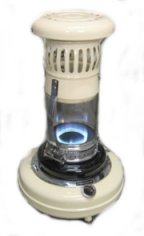
 . . . .
World's Largest Selection of Wicks!
Wicks for virtually every heater, stove and lamp made since 1850
Measuring to find a wick for an unlisted
heater
Newer heaters from
the 1970's on
Victorian Era Flame Spreader Heaters
KINDLER WICK BURNERS
It is possible you
have a "brand name" or "unique" heater that is not listed
in either the alphabetical
list or the
list by wick number. Don't give up, as working
together we can almost always find a wick that will make
your heater work as well as new. Those "odd"
heaters were made by a reputable factory and sold to a
chain store or other retail outlet under a different name
and model number, or sold (even manufactured) in a
different country under another name and model
number. So the wicks are available...it's just a
matter of matching the proper wick with your individual
heater. I have wicks to fit Wards, Kenmore,
Zibro, Eurostove and other heaters which simply do not exist on any
list of heaters, or I can make them.
What we need are
the measurements of your old wick and heater, and only
you can do that. I have over 100 different models
of wicks in stock, and I've measured and recorded the
size of every one of them. You can
e-mail me with your wick measurements, and I will
compare them with my list of wick measurements and let
you know which wick will fit your heater.
There are four
critical measurements I must know: (1) the wick
diameter; (2) the wick width, (3) the wick length; and
(4) the distance from the TOP of the wick to the pins (if
any), or any wick attachments. Some wicks do not look like those
illustrated at the beginning of this article so please scroll to the
bottom of this page for all of the information on wick sizes and
types.
|
The wick must fit precisely
the
wick gap and diameter
The wick
diameter is found by
measuring the width (diameter) of the central air
pillar (center in the illustration above) and
the outside diameter of the wick opening, or
"gap." The wick must fit into the wick
"gap." Just as an example, the central pillar
(around which the wick fits) measures 2 1/2", and
the outside-to-outside measurement (outer edge of
each side of the wick gap, across the air pillar)
is 2 5/8". The diameter of the wick is the
average of those two measurements. In this
case, the wick would be 2 9/16" in diameter.
There are 12 different wick diameters, so this is
an important measurement.
Click on photos to enlarge them.
|
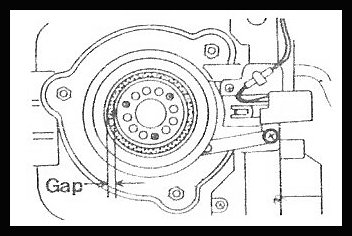
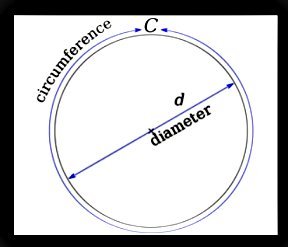 |
|
The wick
length and width is found by
measuring the wick when removed from the
heater. The wick will have to be removed in
any case, so this is a relatively easy measurement
to make. (It is a whole lot easier to remove and
measure a dry wick, so empty the fuel tank and burn
the wick dry if at all possible.) Remember
that you wouldn't be replacing the wick if it were
burning like new, so it was probably about 1/8" to
1/4" longer than your measurement. Note the
metal wick raising attachment on the wick
illustrated - that is an important factor in
identifying the correct wick. This wick is 5 1/4"
wide and 5 3/4" long.
|

|
|
The
distance from the top to the pins (if any) is important because some wicks are
the same diameter and length, but the pin placement
can be either 2 or 2 1/2" below the top of the
wick. Once again, we have to assume the wick
is burned down a little or you would not be needing
a replacement wick, so add 1/8" or so to your
measurement. If a wick with the pins 2" from
the top of the wick is installed in a heater
designed for a 2 1/2" pin depth, the wick simply
will not be able to be raised sufficiently to burn
properly. Conversely, if a wick with a pin
depth of 2 1/2" is installed in a heater designed
for a pin depth of 2", the wick will sit too high
and not retract sufficiently to turn the heater
off, and will be too high for efficient and proper
burning.
|
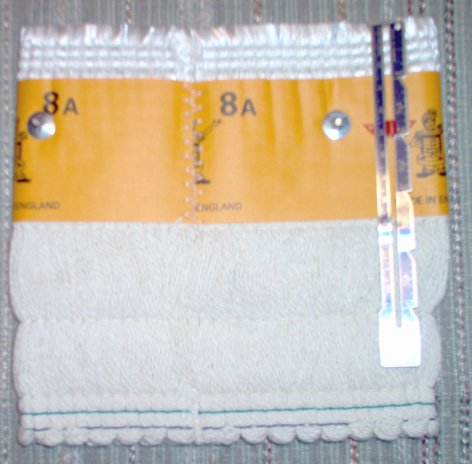
|
|
 |
 |
|
Unpinned wick |
Pinned wick |
|
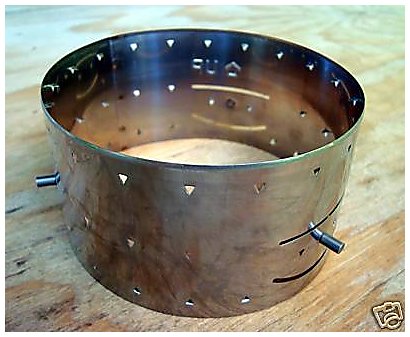 |
 |
|
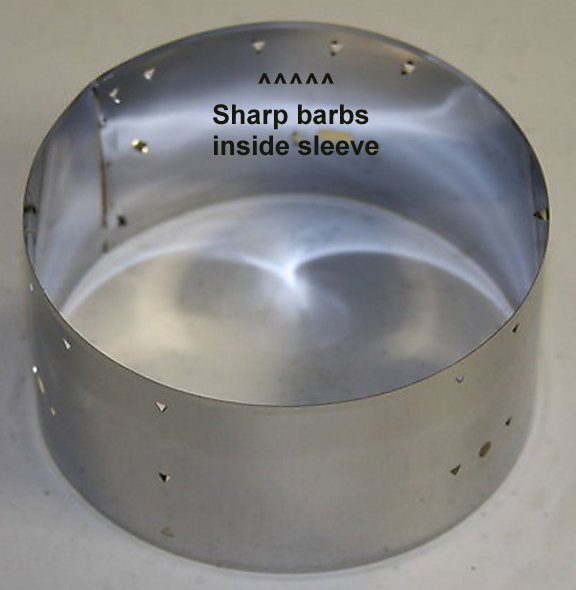 |
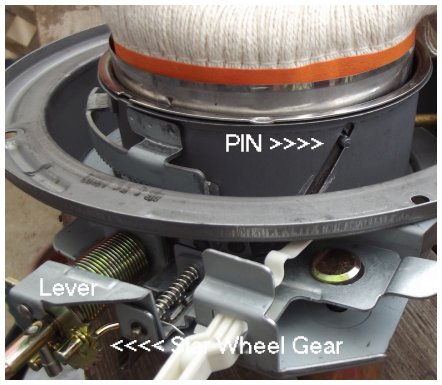 |
|
The wick sleeve for an
unpinned wick has sharp barbs on the inside to hold the wick
in place. The pins (if any) are on the sleeve itself, as in
the photo above. Click on the photos to enlarge them. |
Pinned wick sleeves
have 3 holes for the pins on the wicks to go through, as shown
above and no sharp barbs on the inside of the sleeve. |
With those three
(or four, if the wick is pinned) measurements, you can
e-mail me with those measurements, I check my list of
wicks sizes and let you know which wick will fit your
heater. Then a perfectly good kerosene heater can
be used again - and burn as it did when new!
No, this isn't as
easy as simply reading a list and finding the wick number
listed, but it will work and get your heater working
again!
Modern kerosene heaters were invented in Japan and
they established the standard dimensions used for those wicks.
There are other sizes, of course, but the vast majority of wicks will
have one of the measurements below. Remember, these are the FLAT
WIDTH of the wick across the cloth band when the wick is pressed flat.
The length will vary and you will also need to let me know that
measurement.
Standard widths of kerosene heater wicks
|
Width in Inches |
Width in MM's |
Diameter |
|
3 1/8" |
80mm |
2" - 50mm |
|
4 1/8" |
105mm |
2 9/16" - 64mm |
|
4 3/4" |
120mm |
2 15/16" - 75mm |
|
5 1/2" |
140mm |
3 3/8" - 85mm |
|
6 1/8" |
155mm |
3 3/4" - 95mm |
|
6 1/2" |
165mm |
6 1/2" - 105mm |
|
7 1/2" |
190mm |
4 3.4: - 120mm |
~~~~~~~~~~~~
There are times
when finding a new wick to fit a very obscure heater
takes more work, but it can be done! The
photos below show the process of replacing a wick for a
Handy Master 9700 BTU heater. The wick was
originally sold with the wick sleeve, but that
combination is no longer available. So I modified a
wick to fit the old wick sleeve, cut off the old wick,
and slipped a new wick over a plastic guide. Then the
plastic guide was pulled out from the bottom so the wick
could be grabbed by the sharp points on the stainless
steel wick sleeve. It worked! Now a perfectly
good heater can be put back into operation.
|

|

|
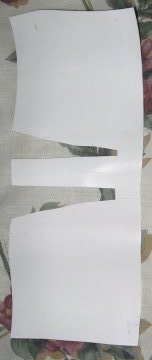
|

|
| Wick in
sleeve, obviously needing replacement. |
The wick
sleeve after the wick was removed. |
A guide
made from the center of a plastic gallon
jug. |
A new
wick slipped over the wick sleeve and the
plastic guide pulled out from the
bottom. |
|
The plastic wick
guide is what makes it possible
to slide a wick over the sharp points on a solid wick sleeve.
The plastic must be thin and flexible while at the same time
being sturdy enough so that the sharp points do not dig into the
plastic so it cannot be withdrawn from between the wick and the
sleeve. I use the smooth plastic from the middle of a kerosene
or Mineral Spirits gallon container. This sleeve is 11"
long, 4 1/2" wide, the slots are 1 5/16" on center and 3 1/2"
deep. Different wick sleeves would require different
dimensions on the plastic guide, of course.
|
Victorian Era Flame Spreader Heaters
HOW TO MEASURE TO DETERMINE THE WICK SIZE REQUIRED
The diameter of the draft tube determines the wick required by the
heater. The draft tube is easier to measure if the burner is
removed, which leaves the draft tube as the only thing protruding from
the tank. You can see right through the draft tube to the floor, rug or
drip pan beneath the fuel tank (font) so it is easy to identify.
In the illustration below, left, the draft tube on this heater measures
2.696''. The draft tube on a Perfection heater measures 2.50'' so
a Perfection wick or wick #3L will not fit this heater; in this case the
measurement is typical for a European heater using a 71mm diameter wick.
If there is a fragment of wick existing, please remove the wick from the
wick sleeve or wick carrier. Lay the wick flat and press it flat,
then measure ACROSS the flat so I can have that measurement. A
Perfection clone that uses wick #3L will be 4 3/8'' wide flat
measurement.
|
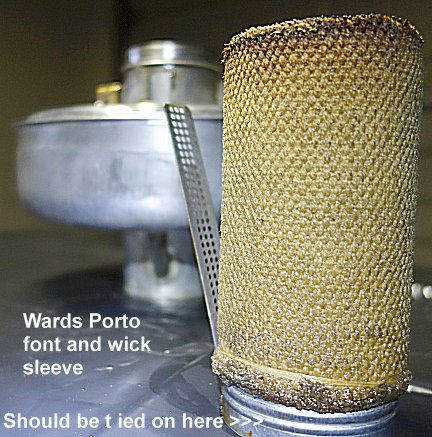 |
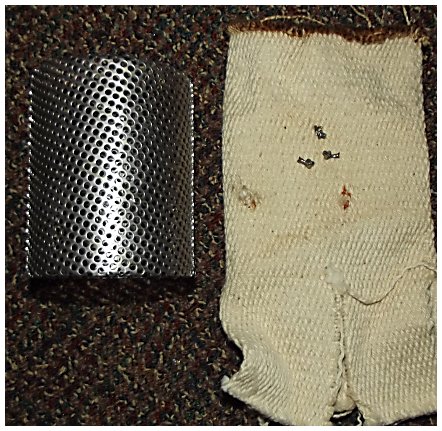 |
|
A wick to fit the wick sleeve above must be a
solid tube - no tails on the wick, and the wick fits on the outside
of the draft tube. Click on the photo to enlarge. |
The wick above extends below the wick sleeve and must have ''tails''
on the wick, as shown. In this case the wick is 4 3/8'' wide and
wick #3L will fit inside the wick sleeve. |
|
It is important to note if the wick fits on the
inside or outside of the wick sleeve and the diameter of the wick
sleeve. A wick fitting on the outside of a wick sleeve must be
larger in diameter than a wick fitting on the inside of a wick
sleeve. See the photo illustrations below. |
Assumptions or guesses just are not accurate enough for finding the
proper wick for a heater, and photos of a burner cannot be accurately
measured because there is no perspective in a photo for relative size.
Some sample measurements of the outside diameter of draft tubes:
-
Perfection 500 draft tube: 2.5''
-
Florence models 81-21, -24, -25; 82-21, -24, -25; 83-12,
-24, -25; H-81, -82, -83 -84, -85, -86 -87, -88: 2.5'',
same as a Perfection heater.
-
Florence Model 10 draft tube is 3 1/16'' diameter.
-
Florence H-124 draft tube is 3 3/4'' diameter and the
wick sleeve is 4 1/4'' in diameter.
-
Acme No. 215, 4.705'' draft tube diameter.
-
Aladdin B-61, C-10.C20, S-1 & S-2, 3'' diameter.
-
Buhl No. 11, 3'' diameter.
-
Puritan #44, 1.910" diameter.
-
Standard New Process 40B, 3.031".
|
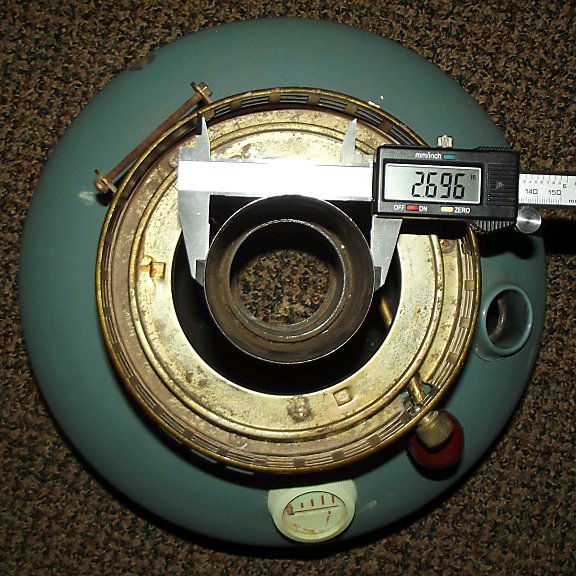 |
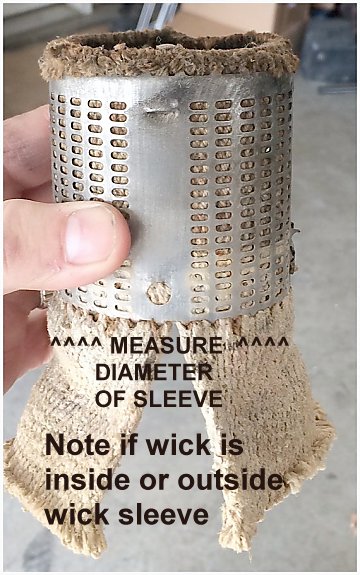 |
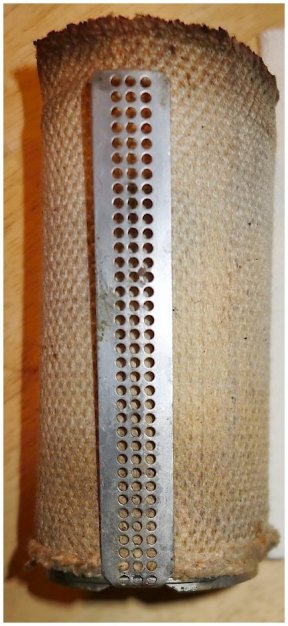 |
|
Measuring draft tube - you can see the floor
through the draft tube |
Wick fits inside sleeve with "tails" below wick |
Wick in full length on sleeve |
More illustrations of Victorian Era flame spreader design heater wick
sleeves and wicks.
Click here.
|
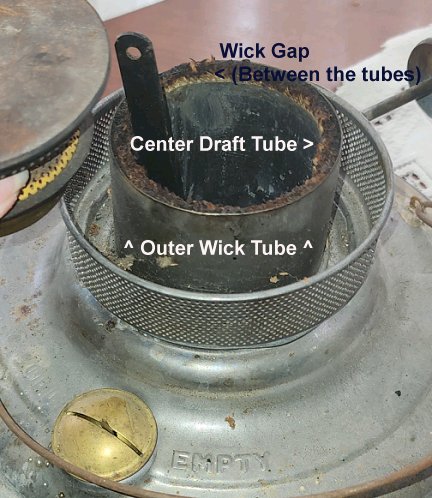
Click to expand the photo |
The wick fits around the center draft tube and
inside the outer wick tube. When measurements are needed the
DIAMETER of the center draft tube is required.
Wick thickness: The wick must fit within
the ''wick gap'' closely so there is not a place for fuel vapor to
pass beside the wick yet the wick cannot be too tight in the wick
gap or the wick is very hard to move up and down. |
|
 |
To make a wick to fit an old, obsolete heater, the
DIAMETER of the center draft tube must be precisely measured. The
wick fits around the draft tube, so the diameter x 3.14 = the circumference
of the inner draft tube, or the actual amount of wick material required to
make the wick. Folded in half the WICK WIDTH is then known and that is
how wicks are measured. |
KINDLER WICK BURNERS
It is possible you have a ''kindler wick'' stove or heater but do not
recognize that style of burner because they have not been generally
available for decades. A ''kindler wick'' burner has a narrow slot
which holds a flat wick varying between 3/4'' and 1 1/2'' wide.
Kindler wicks may look like lamp wicks but most definitely are NOT
cotton lamp wicks - they are specially woven fiberglass wicks reinforced
with copper wire woven into the material. Kindler wick burners
look like this below:
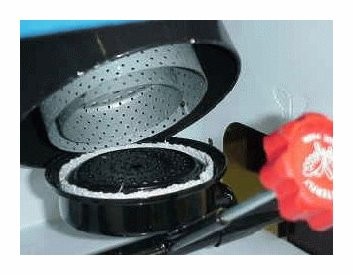
More information on kindler wicks can be found on
the kindler wick page.
Back to top of page
|
Heater Information below
Lamp Wicks:
Center Draft Wicks - Wicks
available only from this Wick Shop.
Flat lamp wicks
Aladdin Lamp Wicks
& parts
Lamp Chimneys:
Center Draft Lamp
chimneys
from "Tiny" Junior to Mammoth lamps.
Fabulous "Sans Rival"
borosilicate chimney for 14''' Kosmos lamps
Student Lamp Sans Rival Chimney with
1 7/8" fitter!!!
Standard glass lamp chimneys
Sonnenbrenner Lamp Chimneys
Information on lamps:
Center Draft Kerosene Lamps
(Photos, information and history, etc)
Photos of
restored center draft lamps
Care, Feeding and Restoration of Center Draft
Lamps
(and wick
installation for many)
Center Draft
Lamp manufacturers and brand names
Lamp Chimneys
- Dimension of
nominal base diameter by make, model and "line".
Early American Metal Font & Specialty Lamps
Aladdin Lamp History
Aladdin Lamp Wicks & Chimneys,
Aladdin - Exploded burner views
Kosmos-Brenner lamps
and wicks
Flame Spreaders and
"Smoke
Consumers"
from Alex
Marrack
- Vulcan, Imperial, Veritas,
Belgian, Hinks, Messenger's, Young's Court, etc.
Articles by Alex Marrack:
Home Page
Site Index
Site Index for all things Perfection
Kindler Wicking For Oil Stoves & Ranges
Kerosene Heaters
Alphabetical list of most kerosene heaters and the proper wick,
& cart checkout.
List by wick number and the heaters that fit them. (A
helpful guide for buying on eBay)
Measurements needed if you have an unlisted heater.
Care and Maintenance of Kerosene Heater Wicks
Installing Kerosene Heater Wicks - generic for unpinned
wicks
Owner's_Manuals & information for many kerosene heaters
Kerosene
Heaters - General types, how they work, recommendations
for some good ones - and those I would avoid.
Economic Benefits of
Kerosene Heaters
Kerosene
Heater Safety
Regular
maintenance
Troubleshooting kerosene heater common problems
Breaking
In New Kerosene Appliances
Burning
Kerosene Heaters at Night
WATER IN KEROSENE causing "dwindling" and poor
performance.
Flame Spreader Heaters
and Lamps -
A Century of Excellence
Kerosene Heater Carts
-
why carry your heater around?
Kerosene Fuel Primer
Sweet
Smelling Kerosene
Kerosene tank cradles
(photo)
Building a Cradle
HALLER "ORIGINEEL"
STOVES
KEROSENE
HEATERS MADE IN THE NETHERLANDS
Beatrice Boiling Stoves & Mini kerosene heaters
you can make
Sad Iron stoves; Wicks &
Installation instructions
Wicking For Oil
Burning "WICKLESS" Stoves & Ranges
Photo Album
Photos of
Wicks
Mail Order
Form
Kerosene Stoves, Lanterns and Ovens
Kerosene Stoves -
Recommendations on different models
Kerosene
Stove Maintenance and Storage
Butterfly A-822, 22 wick, all-aluminum
premium stove.
Butterfly #2487, 16 wick stove.
Butterfly #2412 Pressure
Stove;
instructions for virtually any pressure stove.
Butterfly #2418
Double Burner Stove;
good with any gravity flow stove.
Butterfly #2421
Oven for Kerosene Stoves
Butterfly #2641, 10 Wick Stove
-
the least expensive emergency stove.
Butterfly #2698 Cook Stove -
THE Best Heavy Duty Cook Stove.
Butterfly
#828R Pressure Lantern;
same for most pressure lanterns.
Back to top of page
|























